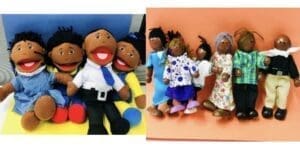People are often surprised to hear that KIND works with and represents infants and toddlers. KIND at times refers to its youngest clients as “tender age” children. As with KIND’s other clients, these children come to the United States without their parents or legal guardian to seek safety. Some come with other caregivers that the U.S. government does not recognize as their legal guardian, such as an aunt or uncle. Others are brought by adults they don’t know to be with family already in the United States. Some come completely alone.
“We see infants; last week we saw a four-month-old child,” said Vicky Hernandez Tufiño, supervising paralegal in KIND’s New York office who works with children who are in Office of Refugee Resettlement (ORR) custody. ORR houses tender age children in special facilities where they are provided additional care appropriate for their young age.
There is no precise legal definition of a tender age child, and the age range varies among different government agencies and organizations. In some legal settings, a tender age child is considered a child between the ages of zero and four, in other contexts between zero and 13. KIND’s New York office, which sees a high volume of tender age children, defines tender age as zero to 10.
Tender age children require special care and age-specific considerations in their legal process. Often younger children are unable to talk and explain their story or are in extreme emotional distress. They are impacted in their country of origin by the same factors as older children: dangerous conditions; violence; threats; climate change, and deep poverty.
KIND provides regular training for social services coordinators, legal staff, and pro bono lawyers on how to work with tender age children. “Communicating with tender age youth is unique and requires a special approach,” said Monica Vera, social services supervisor at KIND’s New York office. “In these trainings, our goal is for staff to know what to expect and how to best approach and communicate with these young children in line with what we know about their developmental stage and the trauma they may have experienced.”
Social services staff from various KIND offices recently developed a therapeutic toolkit for working with tender age children that provides activities, guidelines, and grounding techniques that staff and service providers can use to engage with tender age and adolescent youth. The trauma-informed, culturally responsive toolkit includes de-escalation tools; information that explains how to handle a distressed client; and toys, games, and activities to help soothe children such as weighted blankets and breathing exercises. The toolkit helps staff provide social and emotional support to children without having a social services coordinator present. During an intake, for example, a child can hold a stress ball or fidget toy while answering difficult questions.
“The reality is that we won’t be able to speak with a three-year-old or an infant in the same way we can with an older child. In our work with detained children, we are not able to do our usual intake form with younger children, and so instead we use the tools in the therapeutic toolkit to conduct what we call a wellness check,” explained Vicky. “This includes a visual check and giving the child basic information about their legal rights.”
 Another key approach with tender age children—and a staff favorite, said Vicky—is the use of family dolls, a set of dolls which represent a family. “They are super handy when we are working with the little ones and need to get some basic information. For example, a four-or five-year-old can share some information but can’t articulate everything. We are asking questions such as, ‘Do you know where mom is? Where dad is? If there are other children in government custody?’ We use the dolls as props to encourage the child to share with us and feel comfortable doing so.”
Another key approach with tender age children—and a staff favorite, said Vicky—is the use of family dolls, a set of dolls which represent a family. “They are super handy when we are working with the little ones and need to get some basic information. For example, a four-or five-year-old can share some information but can’t articulate everything. We are asking questions such as, ‘Do you know where mom is? Where dad is? If there are other children in government custody?’ We use the dolls as props to encourage the child to share with us and feel comfortable doing so.”
“It’s beautiful for the children to see their image reflected in the dolls,” Vicky adds. “Children will name the dolls and say ‘This is my mommy. This is my sister.’ Kids are really responsive to the dolls, so they’ve been a helpful tool to get information and figure out a child’s family situation.”
Monica added that KIND also considers tender age children in how we set up our offices. “Because we have so many young clients coming to our New York City office,” said Monica, “we make sure that the office is child-centered and child-friendly. We have toys and tactile items in the waiting room. The space is colorful, friendly, and welcoming. This helps create a nurturing setting in which kids feel safe and comfortable. We’re always striving to be creative and see how we can make spaces more child friendly.”
